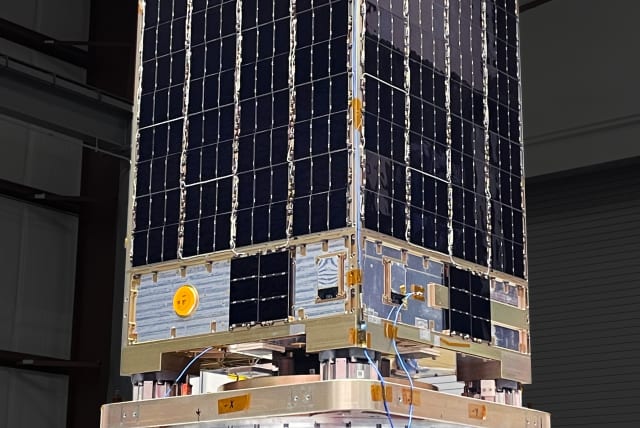PREVIEW: Israel’s ImageSat, SpaceX launch satellite

The satellite was launched into orbit on board a SpaceX Falcon 9 rocket and is the latest satellite that ImageSat has sent into space.
ImageSat International (ISI), Israel's largest space company, launched its RUNNER-1 satellite early Tuesday morning at the Vandenberg Space Force Base in California as part of its efforts to help build Chile's national space program.
The satellite was launched into orbit on board a SpaceX Falcon 9 rocket and is the latest satellite that ImageSat has sent into space, being roughly six months after the launch of its last satellite, the EROS-C3.
Significance of the new satellite
The RUNNER-1 satellite, developed by ImageSat and the aerospace firm Terran Orbital, is a remote sensing satellite that is used for imaging and video recording purposes. It further builds off of Terran Orbital's existing avionics while also integrating ImageSat's electro-optical mission system.
Using remote sensing, ground control, and artificial intelligence, the RUNNER-1 will be able to quickly detect and analyze information. This can be used to detect natural disasters, security threats, climate change, and much more.
Once in orbit, it will serve as a cornerstone of Sistema Nacional Espacial, Chile's budding national space agency.
Falcon 9 launches the Transporter-8 mission, completing SpaceX’s 40th mission of the year and our 200th successful recovery to date! pic.twitter.com/DWI81SfGrU
— SpaceX (@SpaceX) June 12, 2023
"Chile provided a tender to establish a national space program as opposed to buying one or two satellites," Shlomo Indy, ISI vice president of space programs and head of software development, explained to The Jerusalem Post. "What made ISI win the tender is that we understood the vision. Because it's not about one, two, or three satellites. It's about an ecosystem."
That ecosystem includes transferring technology, academic training, education, and more.
"We are providing them with a large-scale ecosystem and a training program involving education, science, and we're building some capabilities on Chilean soil for that," Indy explained.
This is only the start of the company's commitment to helping Chile's space program. In the coming years, the RUNNER-1 satellite, known in Chile as FASat Delta, is going to be followed up by other RUNNER satellites, which have already been designated FASat Echo1 and FASat Echo2.
"The launch of RUNNER-1 marks a significant milestone for ISI," said ISI CEO Noam Segal. "It is the result of extensive R&D period, aiming to position ISI as a one-stop-shop for the geospatial-intelligence industry. The cooperation with Terran Orbital has proved itself to be synergetic, bringing both companies’ expertise and deep knowledge of spacecraft development to best serve the Chilean space program's needs and future requirements."
ImageSat has been in operation for over 20 years and has become a leading player in the private satellite industry. Since their founding, the company has launched hundreds of surveillance satellites into orbit. This constellation of satellites has helped it provide surveillance services for areas all over the world and continues to innovate by incorporating cutting-edge technology, such as AI.
In another partnership the company is undertaking, ISI is partnering up with the Technion-Israel Institute of Technology and the UAE's National Center for Space and Science for a new satellite program to help bring climate change under control.
The first satellite in this program will be launched and placed in the first Lagrange point, around 500,000 kilometers away from Earth, in order to try and reduce the amount of solar energy from reaching Earth to reduce global warming by up to 1.5 degrees annually.
The company hopes it will help the planet cope with the global climate crisis and possibly help humanity gain direct control of the climate in the future.
Jerusalem Post Store
`; document.getElementById("linkPremium").innerHTML = cont; var divWithLink = document.getElementById("premium-link"); if (divWithLink !== null && divWithLink !== 'undefined') { divWithLink.style.border = "solid 1px #cb0f3e"; divWithLink.style.textAlign = "center"; divWithLink.style.marginBottom = "15px"; divWithLink.style.marginTop = "15px"; divWithLink.style.width = "100%"; divWithLink.style.backgroundColor = "#122952"; divWithLink.style.color = "#ffffff"; divWithLink.style.lineHeight = "1.5"; } } (function (v, i) { });
